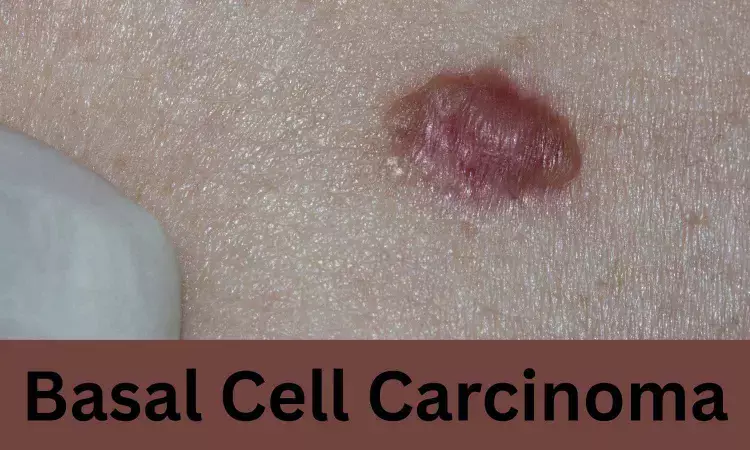- Home
- Medical news & Guidelines
- Anesthesiology
- Cardiology and CTVS
- Critical Care
- Dentistry
- Dermatology
- Diabetes and Endocrinology
- ENT
- Gastroenterology
- Medicine
- Nephrology
- Neurology
- Obstretics-Gynaecology
- Oncology
- Ophthalmology
- Orthopaedics
- Pediatrics-Neonatology
- Psychiatry
- Pulmonology
- Radiology
- Surgery
- Urology
- Laboratory Medicine
- Diet
- Nursing
- Paramedical
- Physiotherapy
- Health news
- Fact Check
- Bone Health Fact Check
- Brain Health Fact Check
- Cancer Related Fact Check
- Child Care Fact Check
- Dental and oral health fact check
- Diabetes and metabolic health fact check
- Diet and Nutrition Fact Check
- Eye and ENT Care Fact Check
- Fitness fact check
- Gut health fact check
- Heart health fact check
- Kidney health fact check
- Medical education fact check
- Men's health fact check
- Respiratory fact check
- Skin and hair care fact check
- Vaccine and Immunization fact check
- Women's health fact check
- AYUSH
- State News
- Andaman and Nicobar Islands
- Andhra Pradesh
- Arunachal Pradesh
- Assam
- Bihar
- Chandigarh
- Chattisgarh
- Dadra and Nagar Haveli
- Daman and Diu
- Delhi
- Goa
- Gujarat
- Haryana
- Himachal Pradesh
- Jammu & Kashmir
- Jharkhand
- Karnataka
- Kerala
- Ladakh
- Lakshadweep
- Madhya Pradesh
- Maharashtra
- Manipur
- Meghalaya
- Mizoram
- Nagaland
- Odisha
- Puducherry
- Punjab
- Rajasthan
- Sikkim
- Tamil Nadu
- Telangana
- Tripura
- Uttar Pradesh
- Uttrakhand
- West Bengal
- Medical Education
- Industry
New Data Highlights Outcomes of Basal Cell Carcinoma in the Head & Neck Region

Pakistan: A new study has shed light on the clinical patterns and long-term outcomes of basal cell carcinoma (BCC) of the head and neck region, highlighting the importance of early diagnosis and vigilant follow-up. Published in Apollo Medicine, the research evaluated six years of institutional data and revealed that recurrence remains a significant concern, even after complete surgical excision.
BCC is the most common form of skin cancer globally, accounting for nearly 80% of non-melanoma skin cancers. Yet, in many regions—including Pakistan—the true burden remains underreported. To bridge this gap, Dr. Mohammad Fazlur Rahman, Department of Surgery, Plastic Surgery Section, Aga Khan University Hospital, Karachi, Pakistan, and colleagues examined 85 histologically confirmed cases of head-and-neck BCC treated at their tertiary center between 2014 and 2020.
The analysis showed that the sixth decade of life was the most affected age group, with a slight predominance in men. The nose emerged as the most common tumor site, followed by other high-exposure areas such as the cheeks, orbit, lips, scalp, and forehead. Notably, more than half of the lesions measured over 2 cm at the time of presentation—an indicator of delayed diagnosis and a potential contributor to poorer outcomes. Despite complete surgical removal, the overall recurrence rate was approximately 21%.
Speaking to Medical Dialogues, Dr. Rahman explained the factors that motivated the team to undertake this research. “We felt that patients with larger tumors had a higher recurrence rate than usual, so we decided to look into our data,” he said.
He also highlighted two major reasons behind the late presentation commonly observed in their cohort: “Most of our patients had fair skin and worked long hours in the sun. Many were from northern Pakistan rather than Karachi, which contributed to delays in seeking care.”
Given the notable recurrence risk, especially in anatomically complex regions of the head and neck, the study emphasizes the importance of patient education and close follow-up. Dr. Rahman stressed that self-monitoring is essential, as many patients do not return for regular review. “We teach patients to watch for signs such as ulcer formation, bleeding, swelling, color changes, or any raised area that appears suspicious,” he noted.
To improve early detection, Dr. Rahman recommended increasing awareness among both patients and primary-care physicians. He emphasized recognizing cardinal warning signs—often summarized as the ABCDE rule:
• A – Asymmetry
• B – Bleeding or border irregularities
• C – Color change
• D – Diameter increase
• E – Evolving lesions
He added that itching should also be considered an important early symptom.
The study concludes that while BCC remains highly treatable, especially when detected early, larger tumors and those located in high-risk areas require long-term surveillance to prevent morbidity and rising healthcare costs. The findings highlight the urgent need for community awareness, better sun protection practices, and structured follow-up pathways to reduce the recurrence burden in the region.
Reference:Unar, A. A., Khan, H., Awan, M. O., Deewani, M. H., & Rahman, M. F. (2025). Frequency and Prognostic Outcomes of Basal Cell Carcinoma of the Head and Neck Region: An Institutional Perspective. Apollo Medicine. https://doi.org/10.1177/09760016251324699
Dr Kamal Kant Kohli-MBBS, DTCD- a chest specialist with more than 30 years of practice and a flair for writing clinical articles, Dr Kamal Kant Kohli joined Medical Dialogues as a Chief Editor of Medical News. Besides writing articles, as an editor, he proofreads and verifies all the medical content published on Medical Dialogues including those coming from journals, studies,medical conferences,guidelines etc. Email: drkohli@medicaldialogues.in. Contact no. 011-43720751


